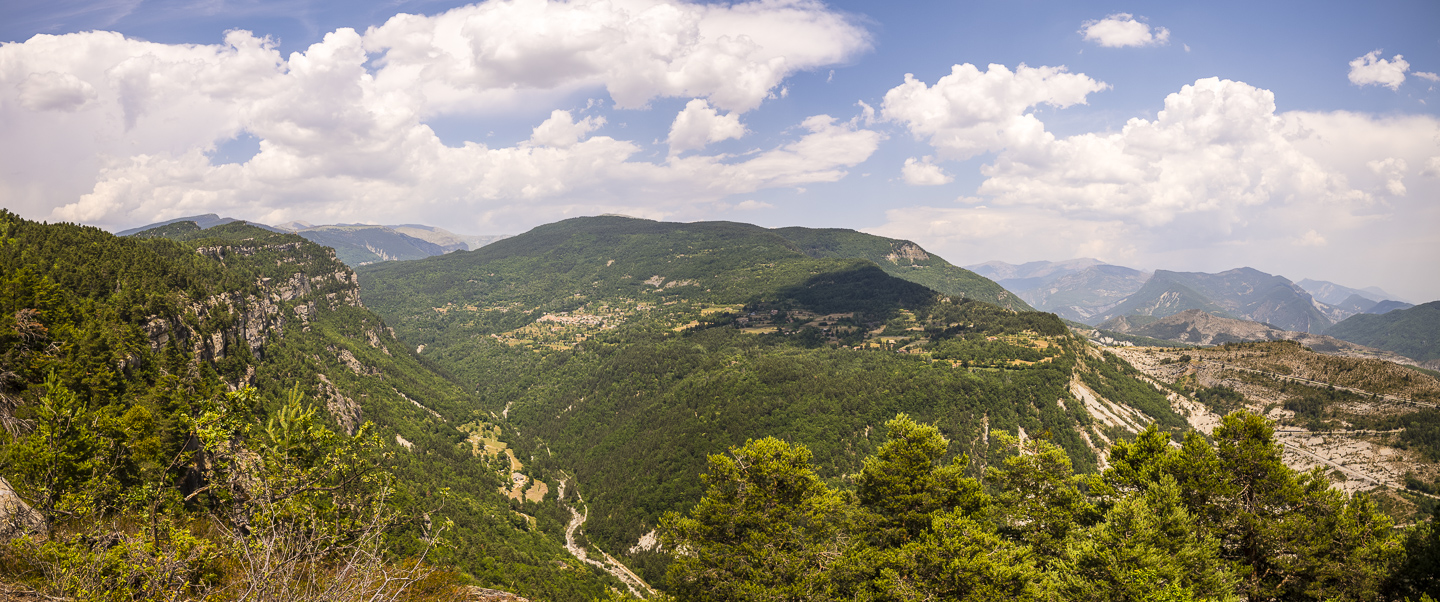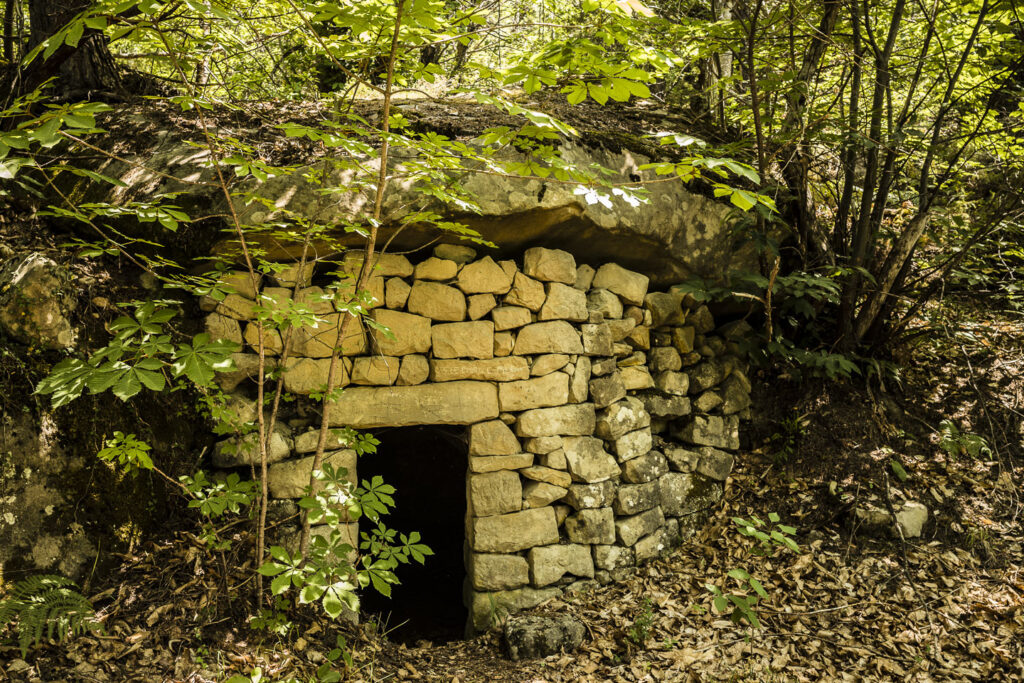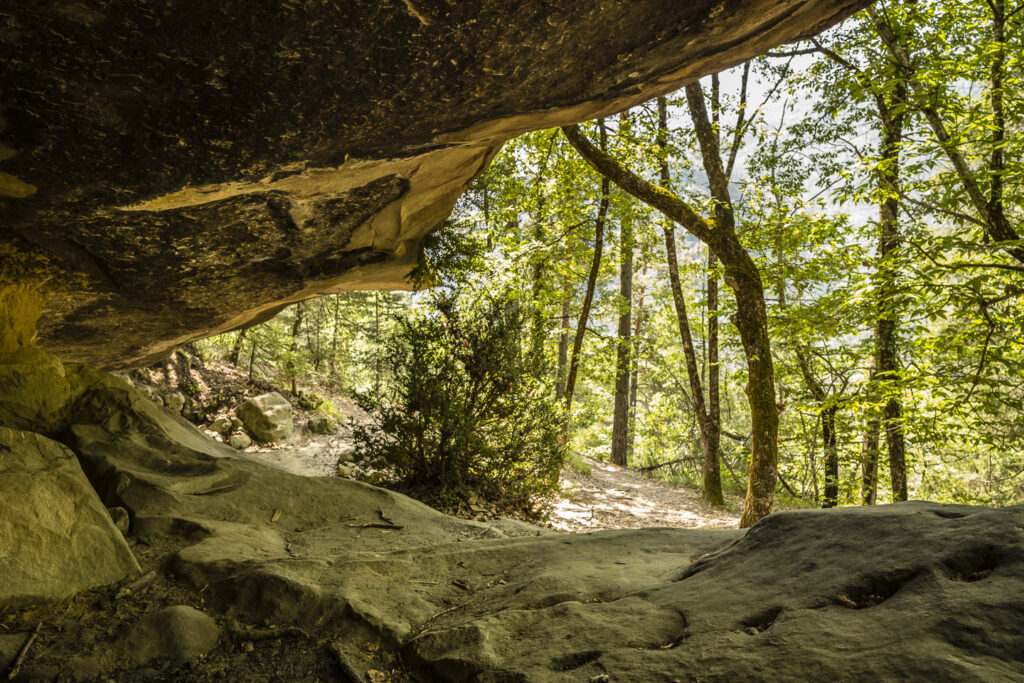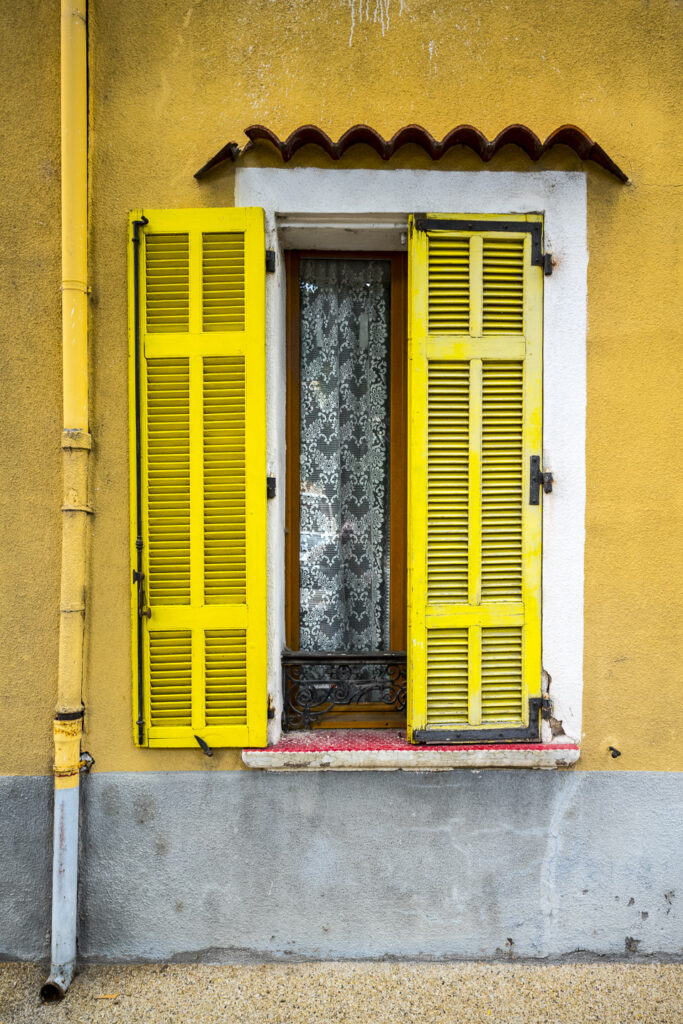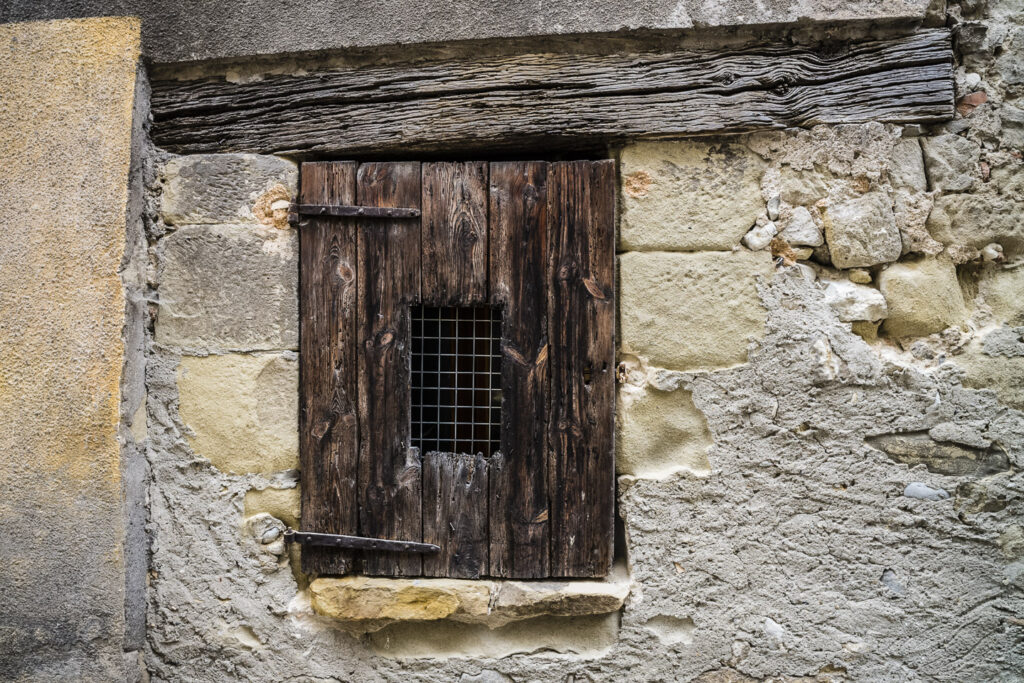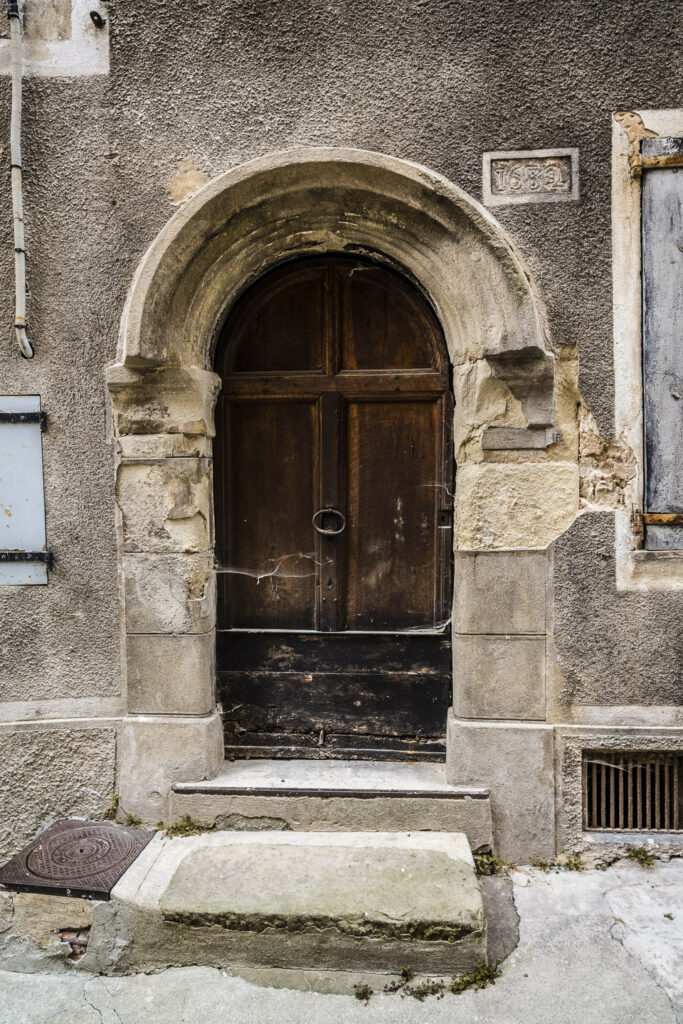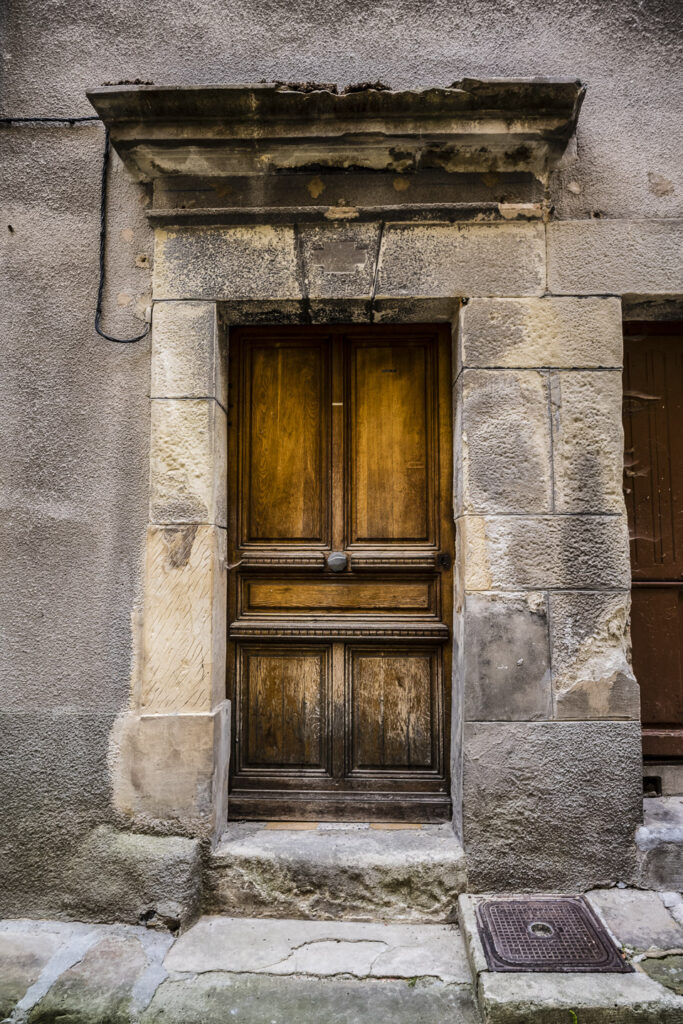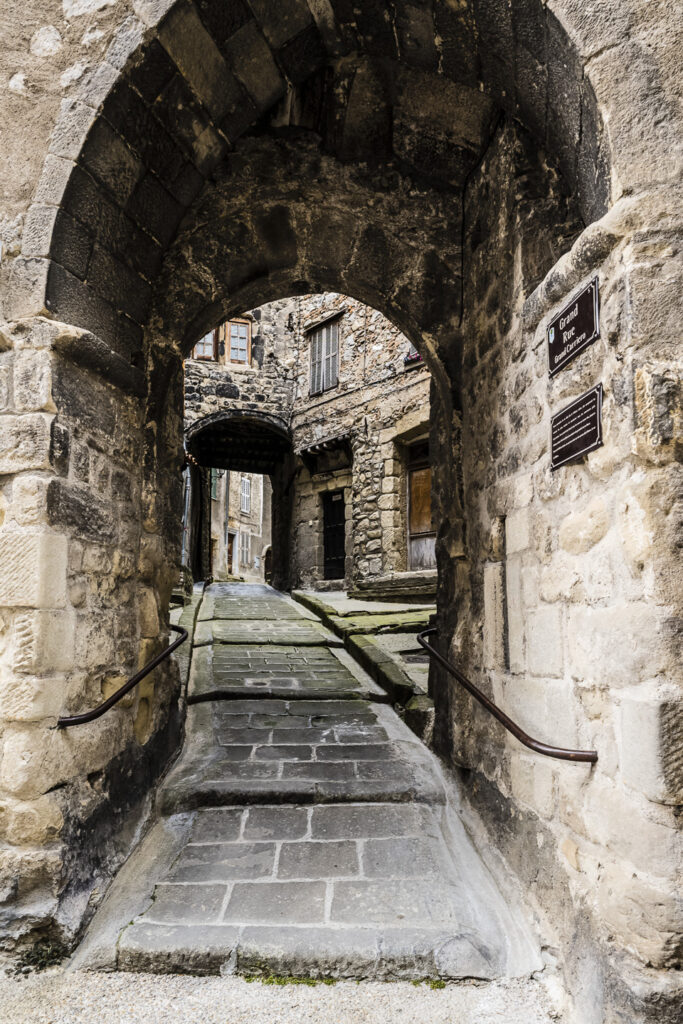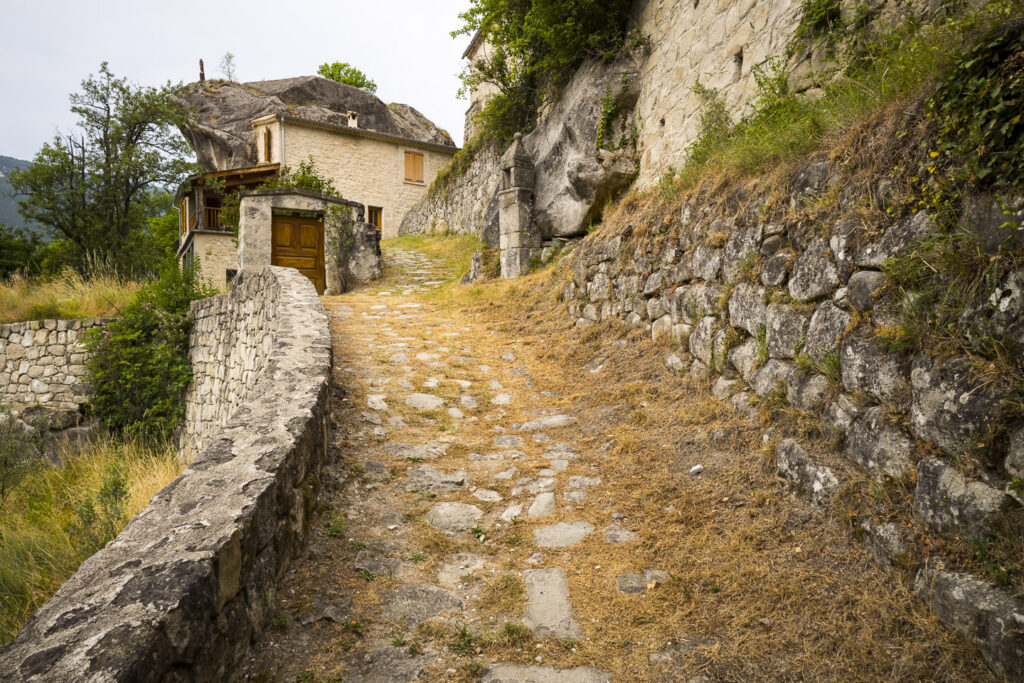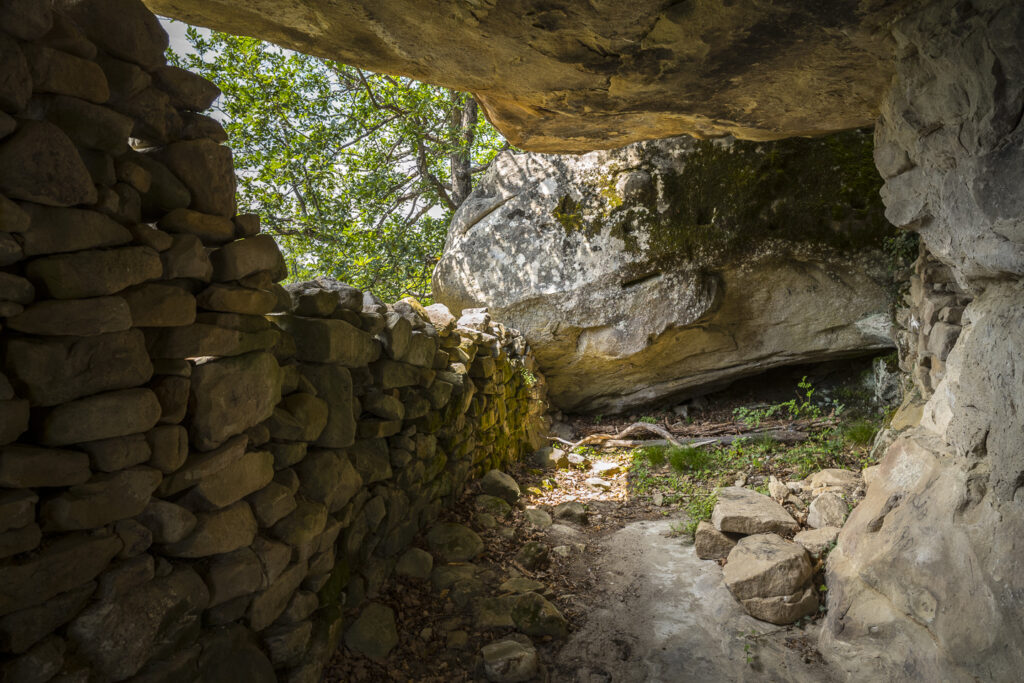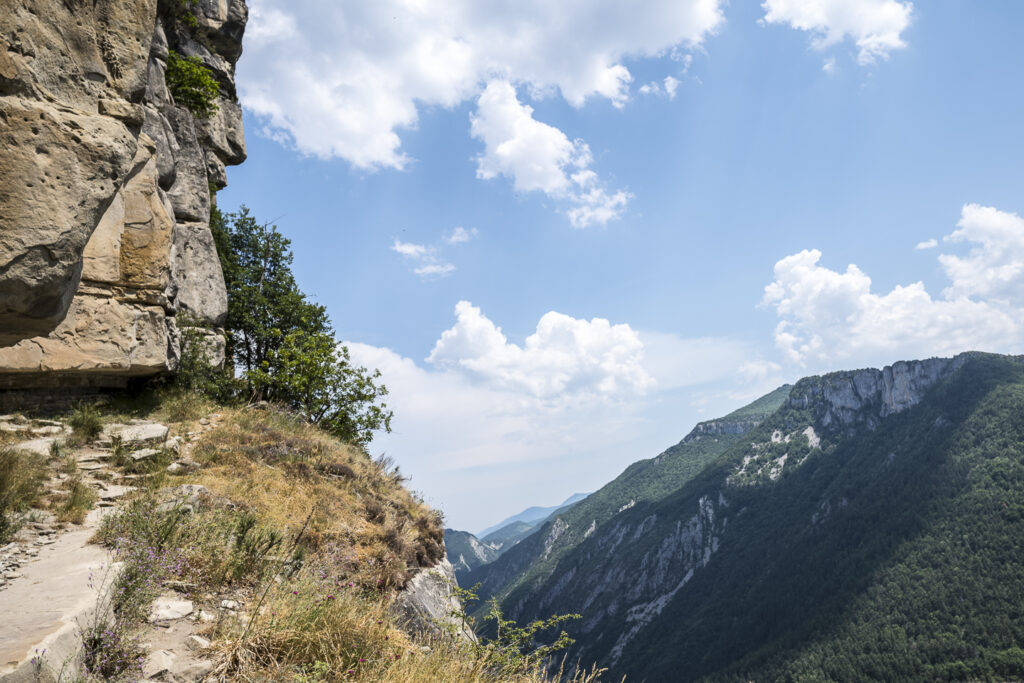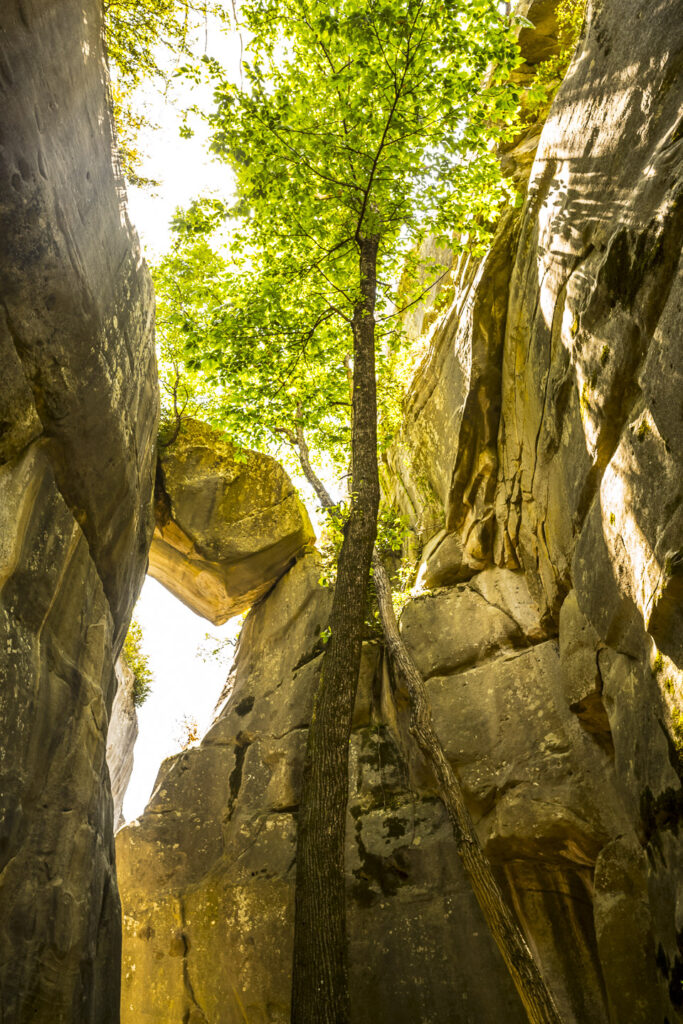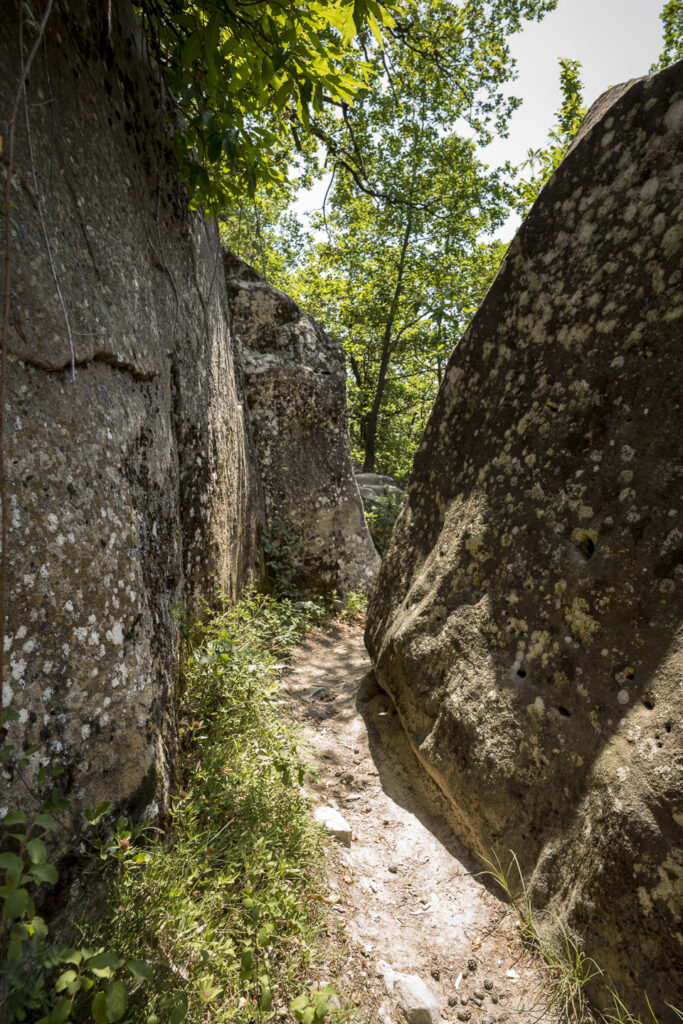In the hinterland of Nice, lies the area of Haute Provence, the foothills, in any other place mountains in their own right, of the Alps. A train runs from Nice, through this area, finishing in Dignes-les-Bains. In the middle of this journey lies a collection of three villages: Puget-Théniers, Entrevaux and Annot. It is to Annot that today’s hike takes us.
Annot has human settlements that pre-date the movement of Celtic arrival in Provence in the 3rd century, BCE (long after they had sacked a fledgling Rome in the 4th Century, BCE). It seems they sought refuge in the hidden valleys, the nooks and crags of the mountains, shelters made using natural rock formations, adding walls, gutters, using the heat of the rock faces they built around to make cosy, habitable homes. Why refuge? Rome was expanding into Gaul during this period, so perhaps they sought to hide from that expansion. It flourished in the middle ages, when much of the old village was constructed.
The geology is quite interesting in this area: previously the area was submerged, part of the Alpine Sea that existed here before vast changes brought the Mediterranean into being, and the land here to rise. Annot is at an altitude over 600 mtrs, and is central to an area of many hiking paths.
The hike is about an 8km loop, with over 350 mtrs of altitude gain. At the tourist info office there is a free brochure (Voyage au gré des temps: Travel to the heights of time) that provides a map and detailed information about the various marked waypoints along the way. It is an excellent guide, and I am using it extensively in these notes.
The main destination for this loop hike, to and from the village, is La Chambre du Roi, and then an ongoing climb to views, around the plateau and back down. La Chambre is a smallish area, quite hidden and enclosed by rocky outcrops, and an entrance that is easily barred. Outside la Chambre, is the Jardin du Roi, a beautiful area of rock and trees, combining to make a stunning landscape.
La Chambre du Roi has a rather strange tale attached to it. Fleeing Saracen pirates who raided the coastal towns of Provence extensively prior to the 10th Century, an aristocrat and his household sought refuge with the local Sigumannians, as the district was know then. This was granted, and they hid high in the hills above, in a hidden and quite secure ‘chamber’ amongst the rocks. However, their presence was betrayed by a servant and they were duly killed, their treasures taken by the marauders, journeying back to the sea. The traitor, of course is now the stuff of legend, his cries of anguish, for his betrayal, filling the nights with remorse. Thankfully, the Lord thy God, punished these heathen Saracens, inflicting the Black Death on them, though they seemed to have escaped with the treasure by and large, and mostly intact, killing many local villagers as they departed for providing sanctuary to the refugees.
But what strikes you, and what filled my mind as I hiked, is really, what a strange conception of God. Either God is cruel and capricious for allowing (because remember the Christian conceives God as omnipotent) the murder of innocents, and presumably good Christians in the bargain (for the villages had honoured pledges of honour by providing safe harbour for the fleeing household), or He is a rather petulant and ineffective God, not being able to stop the murder, and in a fit of pique “inflicts” the Black Death on a couple of the fleeing Saracens. Let that be a lesson to you, you braggarts!, a bit like the black knight – its only a flesh wound – in Monty Python’s The Holy Grail.
All throughout the ridge, there are still shelters based on the original design and techniques of those celts who first settled here. On the way back into town, you come across an old church, perched on the hillside, built into the landscape.


